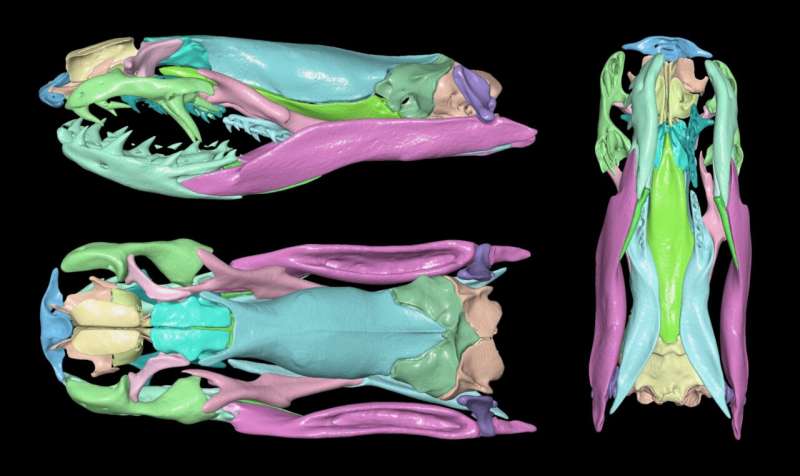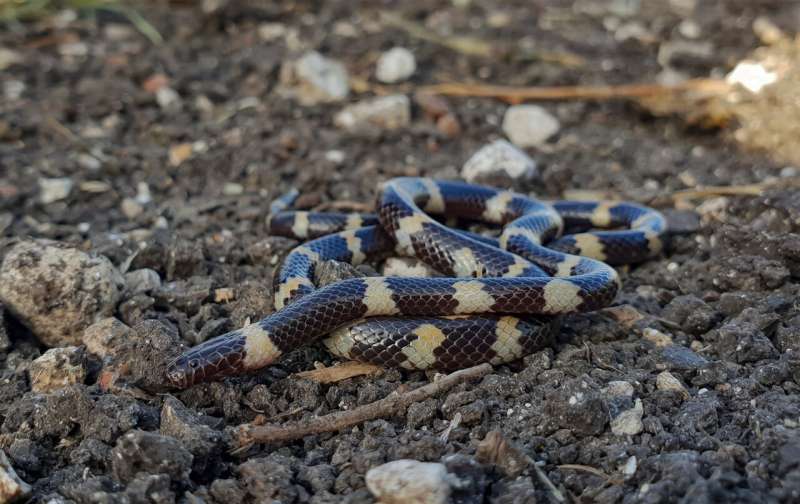This article has been reviewed according to Science X's and . have highlighted the following attributes while ensuring the content's credibility:
fact-checked
peer-reviewed publication
trusted source
proofread
Family tree of major snake group rewritten and new branch of snakes found

An international team has been able to reconstruct the evolutionary tree of a major group of snakes, Elapoidea, that has proved to be a significant step towards the construction of a complete Tree of Life for snakes.
The discovery changes the evolutionary tree of a living superfamily of ecologically hyperdiverse snakes (some of which are the world's deadliest), which is spread out almost around the globe.
The team generated a gigantic genomic dataset of nearly 4,600 genes—as a comparison, most datasets used for DNA taxonomy of animals use fewer than 10 genes. Researchers tested members of every known elapoid family and subfamily. They also used nano- and micro-computed tomographic scans for several elapoid snake species.
New major branch in the family tree of snakes
The researchers discovered an entirely new family within the Elapoidea superfamily (a rank above family in biological classification). Among snakes, one of the most species-rich major groups is this superfamily. Snakes of this superfamily evolved in the early Cenozoic era (the Eocene to be precise), around 50 to 45 million years ago, as estimated by the researchers of the present paper. Elapoidea has some 700 species divided into several families.

The relatives of the ancient snakes still slither among us
Some of the deadliest snakes on the planet belong to this family, such as cobras and mambas, but also harmless and bizarre snakes like the Africa shovel-nose snakes or venomous burrowing asps that can bite without opening their mouth.
While biologists indeed discover new species and genus quite often, discovering an entire family is extremely rare for vertebrates. This new family has two types and a total of four or five species. These snakes are found in the Levant region, Eastern and Northeastern Africa.
"Snakes are not just diverse, but they are very important ecologically. The venomous snakes are important medically as well. What would happen if the knowledge on the evolution and classification of such an important group were in tatters?" Sunandan Das asks.
"Everything would then get seriously impeded: From communication among scientists to research, into the evolution of venom, venom delivery systems etc., from understanding the tempo and mode of the evolution of a big chunk of the global snake diversity to popular scientific work on such group. Until now, this has exactly been the case with elapoid snakes—they are a textbook example of 'ancient, rapid radiation' and as such, a tough nut to crack."
The research is published in the journal Molecular Phylogenetics and Evolution.
More information: Sunandan Das et al, Ultraconserved elements-based phylogenomic systematics of the snake superfamily Elapoidea, with the description of a new Afro-Asian family, Molecular Phylogenetics and Evolution (2023).
Journal information: Molecular Phylogenetics and Evolution
Provided by University of Helsinki





















